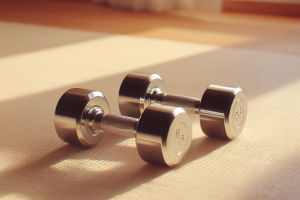Have you ever wondered how ski jumpers slide down from a platform as high as 100 meters and don’t get hurt when they land? It looks thrilling but safe at the same time.
Today, we’ll break down the science behind why these athletes don’t get injured despite falling from such heights. Let’s explore together!
Why Do People Usually Get Hurt When Falling from High Places?
First, to understand why ski jumpers land safely, we need to know why falling from a high place usually causes injuries. When someone falls freely from a height, gravity makes them accelerate — meaning they fall faster and faster until they hit the ground. The speed at which they hit the ground depends on the height they fall from. Simply put, the higher the fall, the faster the speed at impact.
The speed can be calculated by the formula: speed = √(2 × gravity × height). So falling from 100 meters means hitting the ground really fast.
When someone lands, the force they feel depends on two main things: momentum (which is their mass times their speed) and impact time (how long it takes for their speed to reduce to zero after hitting the ground). The shorter the impact time and the bigger the momentum, the greater the force felt.
If a person falls from 100 meters and hits the ground suddenly — in just about 0.04 seconds — they would feel an impact force about 100 times their own weight. This is way beyond what a human body can handle, so severe injuries or worse are almost certain.
So, Why Don’t Ski Jumpers Get Hurt When They Jump From Similar Heights?
Ski jumping is divided into several phases. First, the jumper slides down a steep ramp, called the inrun, where they pick up speed. At the end of this ramp, the athlete can reach speeds over 100 meters per second!
Next comes the most exciting part — the jump itself. The jumper launches into the air and flies for a long distance before landing on a sloped hill designed for a smooth finish.
But if the jumpers are flying from such heights and speeds, why don’t they crash painfully on landing?
The Flight Position and Air Resistance Help Control the Jump
While flying, jumpers lean forward and position their skis in a “V” shape. This shape increases air resistance in a smart way. Air resistance has two effects: one slows the jumper down (drag), and the other creates upward lift, helping them stay in the air longer.
By leaning forward and spreading their skis, jumpers reduce backward drag but maximize lift. This lets them fly farther while keeping control.
Landing on a Gentle Slope Reduces Impact Force
Though the jump looks like a big fall, the ground below is not flat — it’s a steeply sloped landing hill, usually angled around 30 degrees or more. This means jumpers don’t hit the ground straight down; instead, they land almost sliding down the slope.
At landing, their speed splits into two parts: forward speed and downward speed. Because the hill is steep and jumpers’ landing angles are small, the downward speed is much lower than it would be from a straight drop.
Measurements show jumpers’ downward speed at landing is about 15 meters per second — much less than if they fell straight down from the same height.
Longer Impact Time Means Less Force on the Body
Since jumpers land on a slope, they don’t stop instantly. The impact time — how long it takes for them to slow down to zero — is longer, around 0.15 seconds. This longer impact time spreads out the force they feel.
Calculations show this reduces the impact force to roughly 10 times their body weight — a level the human body can manage without injury.
Even better, skilled jumpers who use perfect technique may only experience forces about 2 times their body weight on landing, which is very safe.
What Makes Ski Jumping Safe?
So, what helps ski jumpers land safely from great heights? It’s a combination of:
- Controlled high speeds gained on the ramp
- Smart body and ski positioning in flight to use air resistance and lift
- Landing on a sloped hill that reduces downward speed and extends impact time
- Techniques that spread the impact force over longer time to reduce injury risk
Thanks to these factors, ski jumpers look like they’re flying — and they’re actually landing safely!
What Do You Think, Lykkers?
Now that we’ve uncovered the science behind ski jumping safety, how do you feel about watching the sport? Isn’t it amazing how physics and technique come together to keep athletes safe during such thrilling flights?
If you ever try skiing or watch a ski jumping competition, remember the clever tricks nature and training offer these athletes. Have you seen ski jumping live or on TV? What surprised you most about it? Share your thoughts — we’d love to hear from you!
How Ski Jumpers Keep Flying Farther - Cheddar Explains
Video by Cheddar


